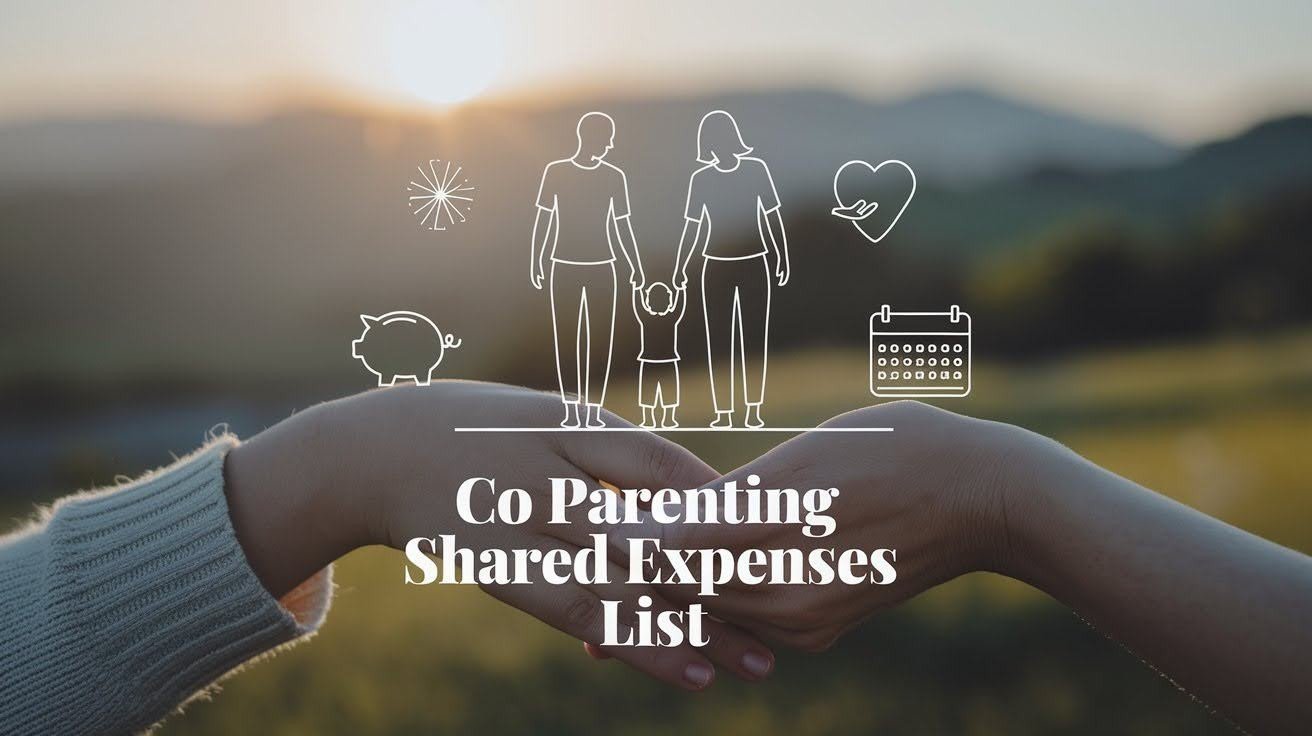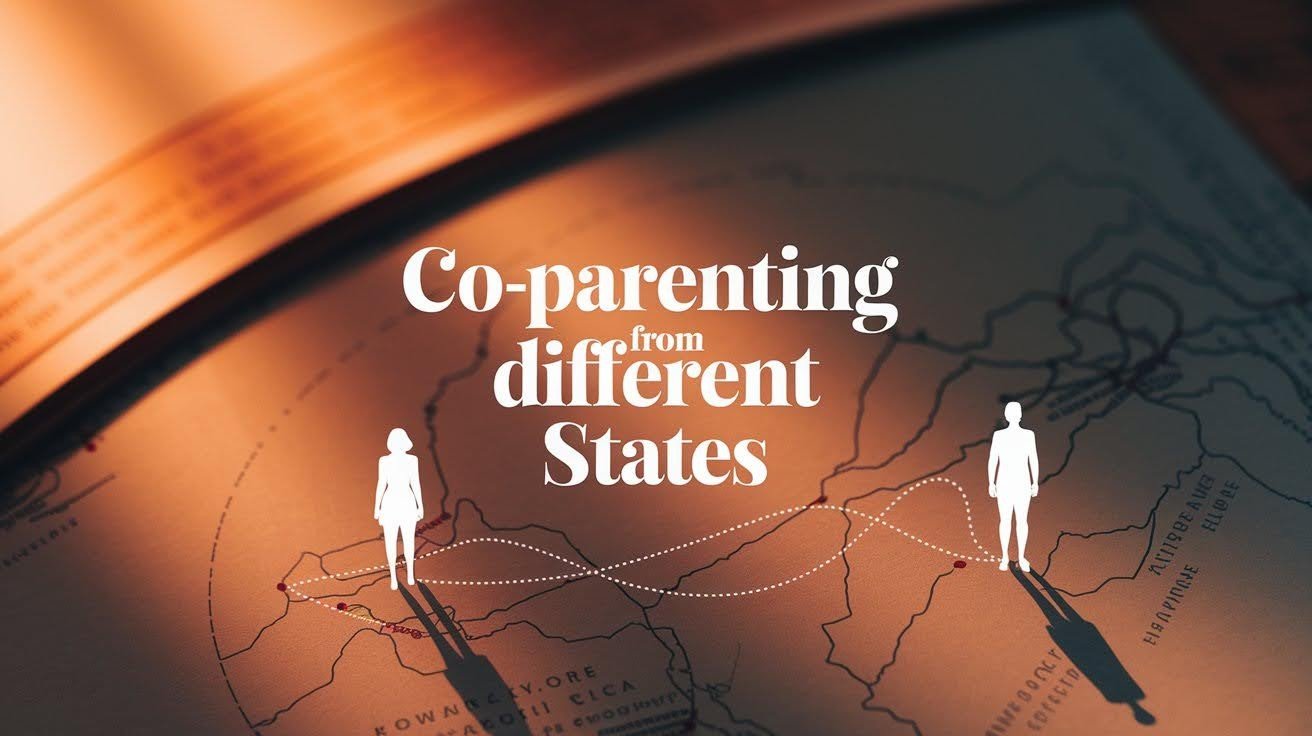Splitting up costs when raising kids across two homes can feel like solving a puzzle with a missing piece. Many parents think that child support is over everything, but the reality is far different.
A co-parenting shared expense list goes beyond basic child support payments. These are the extra costs that pop up in daily life, from soccer to daily cleats to a surprise dental visit. When parents have a clear plan for their expenses, kids benefit from less stress and better care.
Creating this list isn’t about keeping score. It’s about making sure your child gets what they need without fighting over their parents’ money. Smart planning today means fewer arguments tomorrow and happier kids who feel secure in both homes.
Full List of Common Co-Parenting Shared Expenses
Smart parents know that having a complete co-parenting shared expenses list helps avoid surprise costs and keeps both homes on the same page:
Medical And Healthcare Expenses

Insurance premiums, copayments, prescriptions, and Health insurance costs don’t stop at the monthly premium. Doctor visits, urgent care trips, and prescription refills add up quickly throughout the year.
Uninsured costs (out-of-network care, uncovered medications. Sometimes the best care isn’t covered by insurance. Specialists, therapy sessions, or specific medications can create unexpected bills that both parents should plan for.
Dental & orthodontic treatment, Braces, cleanings, and emergency dental work are expensive but necessary. These costs often span several years and need careful planning between both households.
Childcare And Education

Daycare, preschool, before/after-school care. Working parents need reliable childcare. These regular monthly costs are often the biggest shared expense after housing and should be split fairly based on each parent’s income.
School registration, supplies, tutoring, and field trips. Education costs go beyond tuition. Registration fees, new backpacks, calculators, and field trip money all count as shared expenses that support your child’s learning.
Sports fees, uniforms, music lessons, camps, and travel to competitions. Kids benefit from activities that build confidence and skills. Team fees, equipment, private lessons, and travel costs for tournaments should be planned expenses in your budget.
Technology And Personal Needs

Kids today need technology like laptops, phones, and headphones for schoolwork and staying connected between homes. These tools are essential for learning, communication, and social life. Choosing age-appropriate devices ensures safety and usefulness.
Upkeep of these devices, like repairs, upgrades, or accessories, is an ongoing cost. Since children rely on them in both homes, parents should share responsibility for these expenses. Clear agreements on budgets and replacements help avoid conflicts.
Personal care items such as haircuts, shampoos, and skincare products are equally important. They support confidence, hygiene, and health. Sharing these costs ensures children feel cared for and supported in both households.
Transportation Costs

Transportation costs in co-parenting often include school commutes, extracurricular activities, and travel between homes. These are regular, unavoidable expenses that directly support a child’s education and routine.
Depending on distance, transportation might involve fuel, public transit fares, or even ridesharing services. In some cases, larger costs like car maintenance or insurance may also be shared if primarily used for the child’s needs.
Since these expenses can vary, parents benefit from setting clear guidelines on who covers daily travel, long trips, or special events. This prevents confusion and ensures the child’s mobility is consistently supported.
Entertainment, Pets, And Lifestyle

Entertainment, pets, and lifestyle expenses add joy and balance to a child’s life beyond basic needs. Activities like movies, streaming subscriptions, toys, or hobbies help children relax and bond with both parents. These costs, though optional, play an important role in emotional well-being.
If the child has pets, their food, grooming, and vet care become shared responsibilities. Pets often provide comfort and stability, so ensuring their needs are met consistently across both homes is important.
Lifestyle extras like sports equipment, bikes, or musical instruments support personal growth and self-expression. Sharing these expenses fairly allows children to enjoy a full and enriching life in both households.
Special Events And Vacations

Special events and vacations create lasting memories for children and are an important part of family life. Birthdays, festivals, and school functions often involve costs for gifts, outfits, decorations, or parties. Sharing these ensures children feel equally celebrated in both homes.
Vacations, whether short trips or longer holidays, give kids quality time and new experiences with their parents. Expenses may include travel, lodging, tickets, and activities. Since these benefit the child directly, they’re often split or planned together.
Clear communication about budgets and expectations helps avoid conflicts. By planning, parents can create joyful experiences while keeping costs fair and manageable.
Clothing And Seasonal Needs

Children grow quickly, and clothing is a constant shared expense for co-parents. Everyday essentials like school uniforms, shoes, jackets, and casual wear need regular replacement as kids outgrow them.
Seasonal needs, such as winter coats, rain gear, sports shoes, or summer swimwear, often bring extra costs that both parents should anticipate. Splitting these fairly ensures children always have what they need, regardless of which home they’re in.
By coordinating purchases and avoiding duplicates, parents can save money and keep the child’s wardrobe consistent across both households. This also helps the child feel equally cared for and comfortable in both environments.
How to Split Shared Expenses Fairly?
Clothing and seasonal needs like uniforms, shoes, and weather-appropriate gear are recurring shared costs as children grow quickly:
| Topic | Explanation |
| Pro-rata (income-based) vs. 50/50 contributions | Fair doesn’t always mean equal. If one parent makes twice as much, they might pay 60% while the other pays 40%. This income-based approach often works better than splitting everything down the middle. |
| Role of custody arrangements | The parent who has kids more often might pay more for daily expenses. But big costs like medical bills and school fees usually get split based on income, not custody time. |
| Importance of including details in the parenting plan | Your co-parenting shared expenses list should be written down and signed by both parents. Clear rules prevent arguments and help kids feel secure about their needs being met. |
Tips for Managing Co-Parenting Expenses
A good co-parenting shared expenses list needs smart management to work smoothly for everyone involved:
- List exact expense categories you’ll share
- Set spending limits that need approval from both parents
- Include deadlines for paying shared costs
- Plan how to handle emergency expenses
- Agree on which parent pays upfront and gets paid back
- Set rules for kids asking for money from either parent
- Create a system for sharing receipts and expense records
- Decide how often to review and update your expense list
- Include consequences for not paying agreed amounts
- Plan annual reviews of your expense sharing agreement
- Set up emergency funds for unexpected big costs
Conclusion
Shared parenting expenses go far beyond basic child support payments. They cover medical care, education, activities, and all the costs that help children thrive in both homes.
A clear co-parenting shared expenses list creates fairness between parents and reduces money conflicts. When everyone knows who pays for what, kids feel more secure, and parents can focus on raising happy children.
Smart tools like budgeting apps and written agreements make expense sharing easier. With good planning, clear communication, and a child-first approach, divorced parents can handle money matters peacefully while giving their kids everything they need to succeed.
Frequently Asked Questions
What expenses should be included in a co-parenting shared expenses list?
Include medical costs, school expenses, childcare, activities, and transportation. Add any cost that directly benefits your child’s health, education, or development.
How do you split co-parenting expenses when incomes are very different?
Use income-based splitting where the higher earner pays a larger percentage. If one parent makes 70% of the combined income, they pay 70% of the shared expenses.
Should everyday items like clothes and food be shared expenses?
Basic clothing and groceries are usually solo expenses paid by whichever parent has the child. Special items like winter coats or dietary supplements might be shared.
What happens when one parent won’t pay their share of agreed-upon expenses?
Document the unpaid amounts and try talking first. If that doesn’t work, mediation or family court can help enforce your written agreement.
How often should we update our shared expenses agreement?
Review your co-parenting shared expenses list every year or when big changes happen, like new jobs, moving, or your child starting new activities.








